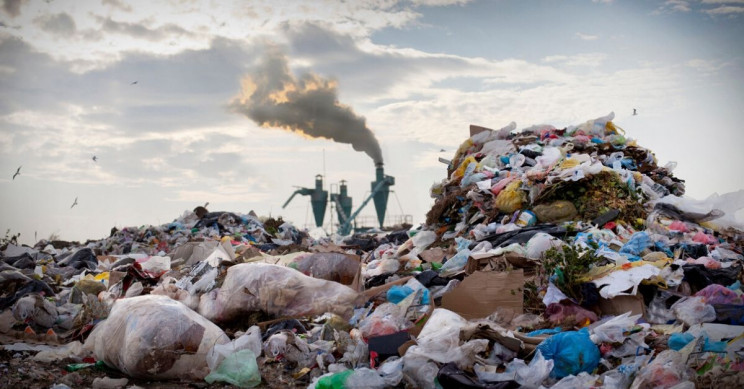How to Live More Sustainably

Not too long ago, few people took into consideration the impact our daily activities would have on the environment. The idea of “sustainable living” was neither a concern nor even a thought in our minds. However, it was on the minds of some individuals in Congress.
Back in 1969, the National Environmental Policy Act (NEPA) introduced the idea of sustainable development due to the growing problems with the air quality, water quality, and other environmental issues. In the report, the NEPA addressed the concerns and defined sustainability as a way “to create and maintain conditions under which man and nature can exist in productive harmony, and fulfill the social, economic, and other requirements of present and future generations of Americans” (NEPA, 2021).
From that point onward, the movement to live and work sustainably began to take root and grow around the world. For instance, in 1970, we celebrated the first “Earth Day” which took place on April 22nd. In the same year, the U.S. government created the Environmental Protection Agency (EPA) and passed the Clean Air Act. In 1972, the U.N. held their Conference on the Human Environment which was one of the earliest global meetings to discuss the environment, conservation, and sustainability. In 1987, the U.N. published Our Common Future, a well-known paper also known as the Brundtland Report. The paper encouraged countries to work together on sustainable development. Some people credit the Brundtland Report with defining sustainability as we know it today. The year 1993 showed us the evolution of “green brands” which is when businesses shifted to a more environmental focus. And in 2015, the U.N. General Assembly published their Sustainable Development Goals which are set to be achieved by the year 2030.

Fast forward to today, we hear about sustainability everywhere from the clothes we wear, to how we shop, to what we eat, the vehicles we drive, the products we make, and the list goes on.
Once considered a passing trend, the concept of living sustainably has been proven to be here to stay. So that’s why on Sustainability Day, we are encouraged to take a moment to remember the importance of caring for our environment and how to implement changes to live more sustainably every day.
What Does Living Sustainably Mean? Why Is It Important?
Living sustainably focuses on lessening one’s impact on the environment and its resources. Unfortunately, this way of living was not considered important for many years on a personal level or in the operating practices of businesses. This has led to years of over consumption, production of large amounts of harmful waste, and squandering of the natural resources needed to sustain our environment in the present and the future.
In his article “11 Ways Humans Impact the Environment,” Donovan Alexnder wrote, “we as humans have become dependent on luxuries such as cars, houses, and even our cell phones. But what does our love for manufactured metallic and plastic goods do to the environment?” The result of this has produced extreme climate change issues, harm to the eco-system from the environment to wildlife and to us humans. To correct this path we are all on, everyone from individuals to corporations must make changes to turn things around before it’s too late.
This can be accomplished by implementing small changes which lead to a bigger impact. For example: increase recycling efforts, reusing items instead buying new, buying locally (think farmers market), making and purchasing eco-friendly products, forest management practices and a number of other ways.
By making just a few changes towards a more sustainable lifestyle, you can reduce your carbon footprint to lessen the negative impact on the environment and better protect it now and for future generations.
7 Ways to Live More Sustainably
There are countless other ways to live a more sustainable life whether at home or at work. You can drive less, use more renewable energy, wear sustainable clothing, use less plastic, cut back on meat consumption and more. As you can see, there is no one way to live this lifestyle. Sustainability Day was created to remind all of us about the importance of caring for the environment and learn the steps to do so for a better future.
- Practice Zero Waste. This philosophy focuses on a resourceful life cycle where all products are reused, creating no waste. This can be accomplished on an individual level in your home or a group effort in communities. For example, if you have leftovers, don’t throw them away. Save them for your lunch, or even freeze them till you are ready to eat them again. However, if they must go, why not use your leftovers to create compost for your garden.
- Save that energy! Use less energy to help reduce carbon emissions into the atmosphere. At home, there are countless ways you can save energy by setting your heat or air temperature to turn on and off with a timer, turning off standby appliances, air drying clothes by hanging them up, using led lights, energy efficient appliances and more. In the workplace, you can start with an energy audit. An energy audit can help determine your baseline energy use and offer a clear outline for ways to save energy at work.
- Conserve Water. You can save water in and around your home by making a number of small changes. Fix any leaks in your home promptly. Use low flow toilets to avoid wasting water. Replace showerheads and limit shower times. Try installing a water butt and making use of grey water to avoid wasting drinking water. Did you know that only 3% of the Earth’s water is freshwater? It’s important that we protect this critical natural resource.
- Use eco-friendly products. Sustainability has become more and more important to shoppers around the world. Companies and manufacturers are taking notice and looking for ways to make their products guilt-free for consumers with this goal in mind. From checking tags and visiting company websites, to changing our own habits at home, there are now more ways than ever to shop more eco-friendly for our environment.
- Donate unused items. Whether moving or just giving your place a good clean out, the process can generate a lot of waste. Thankfully, there are many organizations and resources available for minimizing waste by donating your unwanted items a second (or third, or fourth) time. If you don’t use an item or wear a piece of clothing anymore, give it to a charity shop. Some even offer free pick-up services. Or give it to someone you know who would make use of it to help reduce waste. You can also look online for “freecycle” and “buy nothing” groups on Facebook.
- Grow your own food. According to the US Environmental Protection Agency (EPA), approximately 25 percent of global carbon emissions are caused by the worldwide industrial production of food. This cycle begins with emissions from the clearing of land to make room for monoculture crops. The removal of trees and the breakdown of key soil components reducing nature’s ability to absorb, distribute, and store carbon and keep it from being released into the atmosphere and contributing to the increase in greenhouse gases. With the compounded use of fossil fuels in transporting the goods long-distance and the use of synthetic fertilizers on the goods, growing your own food benefits not only the environment but your overall health as well (Allen, 2021).

- Buy less and buy better. Going the cheap route, although may save you some money, does not always provide you with the best quality items for long term use. Remember: every item purchased has an environmental footprint. This means everything from the materials used to create it, to the pollution emitted during manufacturing, to the packaging that (sometimes) ends up in landfills, all have an impact on the environment. If you find yourself having to replace items purchased on the “economical side” regularly, it might be time to change that habit. Try to purchase quality products made by companies that use eco-friendly practices in their production processes. Although the price tag may be a little more than cheaper counterparts, you will purchase less over time and reduce waste in the environment. Simply search online for sustainable products, eco-friendly goods, green products, environmentally friendly items to find the right products for you. Don’t forget to look for environmentally friendly & sustainable companies, too.
There are countless other ways to live a more sustainable life whether at home or at work. You can drive less, use more renewable energy, wear sustainable clothing, use less plastic, cut back on meat consumption and more. As you can see, there is no one way to live this lifestyle. Sustainability Day was created to remind all of us about the importance of caring for the environment and learn the steps to do so for a better future.

To Learn More About Living and Working More Sustainably Check Out These Helpful Resources
- https://ceq.doe.gov/index.html
- https://www.earthday.org/history/
- https://reelpaper.com/blogs/reel-talk/sustainability-earth-day-2021
- https://sustainabledevelopment.un.org/content/documents/5987our-common-future.pdf
- https://pariscorp.com/what-is-your-carbon-footprint/
- https://www.iisd.org/about-iisd/sustainable-development
- https://www.usatoday.com/story/money/2019/06/17/climate-change-30-ways-to-make-your-life-more-environmentally-friendly/39366589/
- https://interestingengineering.com/11-ways-humans-impact-the-environment
- https://www.thegardencontinuum.com/blog/the-6-environmental-and-health-benefits-of-growing-your-own-food
- https://www.constellation.com/solutions/for-your-small-business/goals/19-business-energy-savings-tips.html








